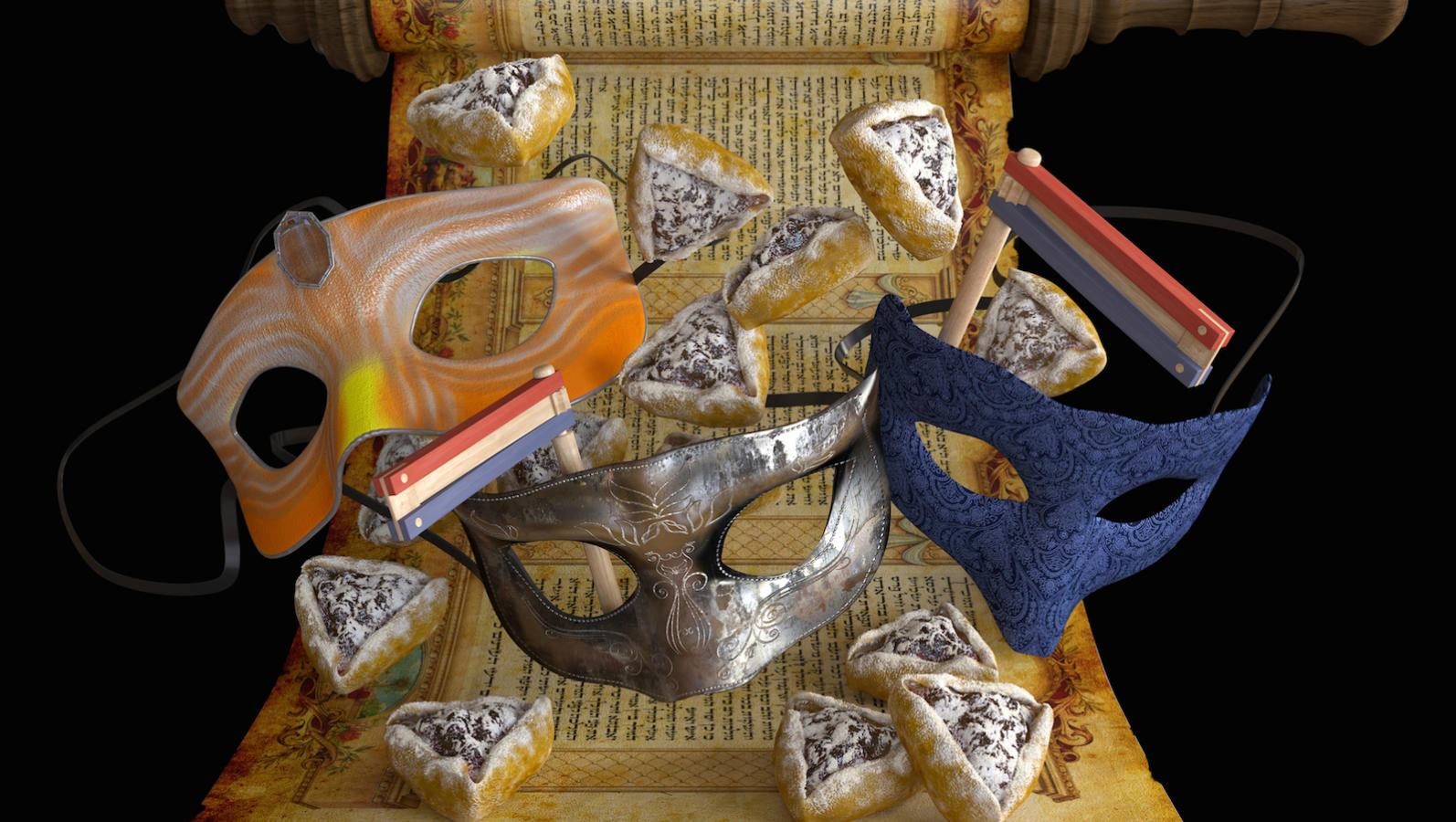Recently, someone asked me whether I liked better than Halloween. It seemed like such an odd question; the holidays had been so distinctly incomparable in my mind. But upon consideration, perhaps because my name is Esther, perhaps because of my Jewish background, I would have to say that Purim unequivocally kicks Halloween’s rump. Of course, I am slightly biased: If Halloween featured a Queen Esther, I might be inclined to change my preference. But I doubt it.
When I was growing up, Halloween was only celebrated by public school kids. At my (Jewish day school), a letter from the principal was sent to parents each October warning them that observance of Halloween was pagan and therefore destructive to the Jewish educational process. As a result, while my public school contemporaries demanded candy from strangers, I stayed home and watched “It’s the Great Pumpkin, Charlie Brown.” Again. And that was Halloween.
The first time I trick-or-treated was in college, after my Jewish education was set and solid. Some of my friends ventured to the nearby suburbs to go door to door. Instead of aping local urchins desperate for a sugar rush and threatening a trick if thwarted, we decided to offer a service in return for sweets. We sang to the people who opened the door, usually classic tunes like “I Get a Kick Out of You” or “New York, New York”; they smiled, and we were one step closer to our ultimate goal…tooth decay. In our version of the trick-or- treat, everyone wins. I learned a lot from the experience: that I feel awkward in a costume, that I like to sing, and that it is fun to get candy from people. There was no spiritual or religious component to my first Halloween; it could have happened any day of the year.
Purim is a different story entirely, quite literally. The story is written in a scroll, the reading of which is one of the holiday’s most basic components. The dramatis personae are weak and relatable, palpably human. The story is about being in the right place at the right time, and interestingly enough, God barely even plays an onstage role. Righteousness is rewarded with royalty and evil punished with death. A perfect Hollywood tale, driven by named characters from opening titles to closing credits. Purim is good. Purim, for lack of a better word, works. We identify with the heroes of Purim and see them in our mind’s eye; we carry the story with us as we party into the night and feast during the day that follows.

Help us keep Jewish knowledge accessible to millions of people around the world.
Your donation to My Jewish Learning fuels endless journeys of Jewish discovery. With your help, My Jewish Learning can continue to provide nonstop opportunities for learning, connection and growth.
But our partying is not without accountability. The traditions of Purim, not always observed by costumed revelers, are sending packages of food to one’s neighbors (mishloach manot) and gifts to the poor (matanot la’evyonim). These traditions add a social service element to the celebration: Although we acknowledge the importance of a good party, we also recognize our responsibility to others.
The one thing that Halloween and Purim really have in common is the propensity of celebrants to dress up in costume. But on Purim, these costumes have a meaning: They reflect the theme of hiddenness in the Megillah, the scroll that is read aloud on Purim. Any former student of high school English can tell you that “appearance versus reality” is often a key literary theme; similarly in the Purim story, at the end of which nothing is what it initially seemed to be.
Queen Esther hides her Jewish identity from her husband the king, Haman recommends to the king a reward that he thinks he will receive and which is, instead, given to his arch-enemy Mordecai. A gallows that Haman prepares for Mordecai becomes the site of his own execution. (Isn’t it ironic? Don’t you think?) The name “Esther” has as its Hebrew root “seter,” meaning hiddenness or secrecy. Even the name of God is hidden, as it appears nowhere in the text of the Megillah. Some readers identify one verse where a reference to God can be inferred, but there is no direct reference to God or divine power. Costumes on Purim possess an entirely different meaning than those commissioned by Halloween.
And then there is the all-important and traditional overindulgence in alcohol. Allow me to offer you an argument in favor of alcoholic libations. Wine and feasting are thematic elements throughout the Purim story. Even in excess and revelry, there is an implied limit to our indulgence: We read the Megillah twice, once at night before the party, and again the following morning. The implicit message is, “drink ’em if you got ’em, but remember that you have to show up for services in the morning.”
The Purim wine is not just about getting a little high. Wine, and feasting in general, are signs of freedom, luxury, and affluence. This Purim, eat, drink, be merry, and if you want to, wear a costume–but also be a mensch. Know the story behind the holiday and keep an eye on the less fortunate. And when you can’t tell the difference between Republicans and Democrats, it’s time to call it a night. As they say at the local watering holes on the Upper West Side, “You don’t have to go home, but you can’t stay here.”
Reprinted with permission from Jewish Family & Life!



